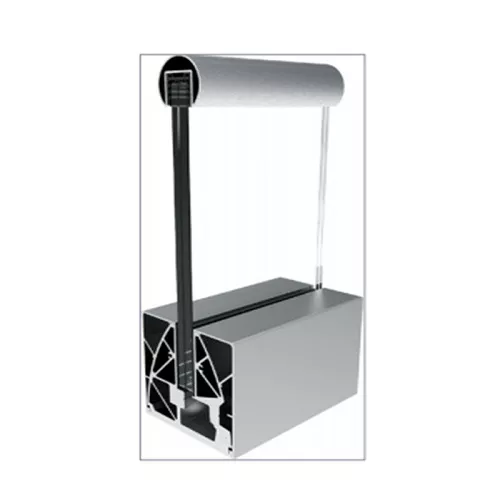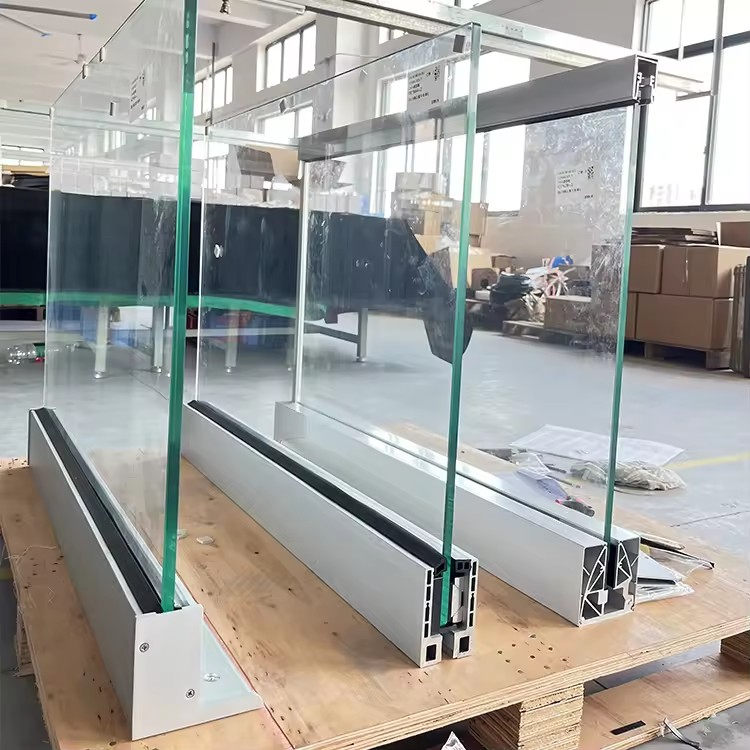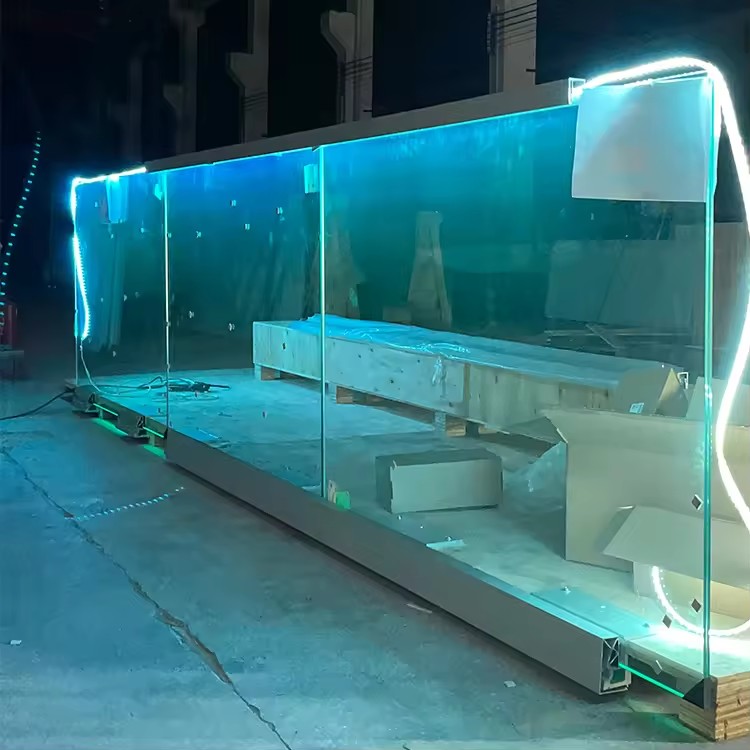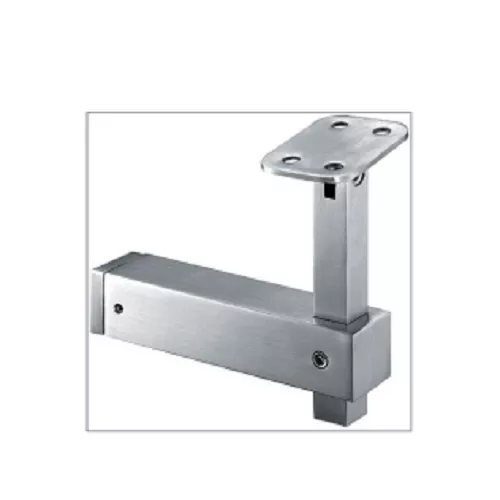What Is a Glass Railing? A Comprehensive Guide to Modern Architectural Elements
 Feb 22,2025
Feb 22,2025

 HDSAFE
HDSAFE
What Is a Glass Railing? A Comprehensive Guide to Modern Architectural Elements.
What Is a Glass Railing? A Comprehensive Guide to Modern Architectural Elements
Glass railings have become a staple in contemporary architecture and interior design, blending aesthetics with functionality. From sleek balconies to elegant staircases, these structures redefine spatial boundaries while offering unmatched visual appeal. But what exactly constitutes a glass railing, and why has it gained such popularity?
Definition and Core Characteristics
A glass railing is a structural barrier typically composed of transparent or translucent glass panels, supported by metal, wood, or composite frames. Its primary purpose is to provide safety and delineation in spaces such as balconies, decks, staircases, terraces, and public walkways. Unlike traditional wooden or metal railings, glass railings emphasize openness, lightness, and a modern, minimalist aesthetic.
Key features include:
- Transparency: Allows natural light penetration and unobstructed views.
- Strength: Engineered to withstand weight, weather, and impact.
- Customization: Available in various styles, colors, and finishes to suit different design preferences.
Materials Used in Glass Railings
Glass railings are constructed from specialized materials to ensure durability and safety:
Tempered Glass
- Also known as toughened glass, it undergoes thermal or chemical treatment to increase strength. Tempered glass shatters into small, harmless fragments upon breaking, making it safer for high-traffic areas.
Laminated Glass
- Composed of two or more glass layers bonded with a polyvinyl butyral (PVB) interlayer. This type offers enhanced security and soundproofing while preventing shards from spreading in case of breakage.
Annealed Glass
- A softer, more affordable option with balanced thermal properties. Though less durable than tempered or laminated glass, it is often used in low-impact areas.
Acrylic Glass (Polycarbonate)
- A lightweight, UV-resistant alternative to traditional glass. It is highly impact-resistant and ideal for outdoor railings exposed to extreme weather.
Design Styles and Components
Glass railings come in diverse configurations to accommodate different architectural visions:
1. Frameless Glass Railings
- Description: Built without visible frames, relying on clamps, brackets, or hidden supports for stability.
- Appearance: Maximizes transparency and creates a seamless connection between indoor and outdoor spaces.
- Common Uses: Luxury balconies, modern homes, and high-end commercial projects.
2. Balustrade Systems
- Description: Combines glass panels with vertical balusters (spindles) for added visual interest and support.
- Styles:
- Fixed-Glass Balustrades: Offer uninterrupted views.
- Open-Glass Balustrades: Incorporate spacing between glass sections for a lighter look.
3. Tinted and Frosted Glass Railings
- Description: Colored or textured glass panels to enhance privacy, reduce glare, or add decorative elements.
- Applications: Bathrooms, offices, and spaces requiring light control.
4. Handrail Integration
- Description: Glass panels combined with functional handrails made of stainless steel, aluminum, or wood.
- Benefits: Combines safety with a sleek, unified design.
Applications of Glass Railings
Glass railings are versatile and suitable for both residential and commercial projects:
Residential Use
- Balconies and Decks: Protect outdoor living spaces while preserving openness.
- Staircases: Replace bulky wooden rails with elegant, modern alternatives.
- Pool Areas: Enhance safety and aesthetics around water features.
Commercial and Public Use
- High-Rise Buildings: Offer safe, visually appealing barriers for terraces and walkways.
- Hotels and Restaurants: Create inviting lobbies and outdoor seating areas.
- Parks and Transit Stations: Improve pedestrian safety with illuminated or reflective glass railings.
Advantages of Glass Railings
- Modern Aesthetic: Blends seamlessly with contemporary designs, elevating property value.
- Light Transmission: Maximizes natural light, reducing energy costs for lighting.
- Space Perception: Makes rooms and outdoor areas feel larger and more open.
- Low Maintenance: Resistant to rot, mold, and pests compared to wood or composite materials.
- Customization Options: Available in various colors, textures, and finishes to match branding or interior themes.
Considerations and Challenges
While glass railings offer numerous benefits, certain factors require careful planning:
Safety Standards
- Compliance with local building codes is critical. Railings must meet height, thickness, and load-bearing requirements.
- For high-risk areas (e.g., balconies above ground level), tempered or laminated glass is often mandatory.
Cost
- High-quality glass and framing materials can increase upfront expenses. However, long-term savings from reduced maintenance may offset the initial cost.
Maintenance
- Regular cleaning to prevent smudges and UV damage.
- Shielding from extreme weather conditions to avoid thermal stress or cracking.
Breakage Risk
- While modern glass is durable, impact damage (e.g., from falling objects) remains a concern. Laminated glass is recommended for high-traffic zones.
Future Trends in Glass Railings
As technology and design evolve, glass railings are adopting innovative features:
- Smart Glass: Incorporating sensors or switchable tinting for privacy and light control.
- Sustainable Materials: Recycled glass panels and eco-friendly coatings to reduce environmental impact.
- Integration with LED Lighting: As seen in previous innovations, embedded LED systems enhance functionality and visual appeal.
- Curved and Cantilevered Designs: Pushing the boundaries of structural engineering for unique, sculptural forms.
Conclusion
A glass railing is far more than a functional barrier—it is a statement of modernity, elegance, and forward-thinking design. By combining safety, sustainability, and aesthetic flexibility, glass railings continue to reshape urban and residential landscapes. Whether you’re designing a luxury home, a bustling commercial space, or a public infrastructure project, understanding the material options, styles, and applications of glass railings is essential for achieving iconic, timeless results.
 Widest range
Widest range +8613925916091
+8613925916091  chenrui.sh@163.net
chenrui.sh@163.net
 Home
Home Innovative LED Glass Railings: Revolutionizing Architectural Design with Smart Technology
Innovative LED Glass Railings: Revolutionizing Architectural Design with Smart Technology  You May Also Like
You May Also Like









 Tel
Tel
 Email
Email
 Address
Address












